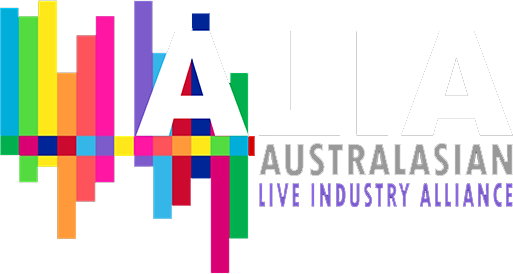It has to be said that this is one of the best-sounding shows I have ever attended over many years of evaluating productions. I don’t often insert my opinion but this begs an exception.
Howard says that when he sits down in front of a big sound system, he imagines he is in a state-of-the-art recording studio hearing studio monitors.

“I don’t want any colouring in the low frequency or over the top bottom end,” he remarked. “If I want over the top bottom end, I do it on the mixing console. The problem with a lot of factory line arrays is they inherently have a kick in the low end and a lot of less experienced sound engineers don’t realise that if you leave that boost in the low frequency in the low mid without making it more linear, it’s on every channel of your mixing console before you start mixing. So all those lovely, hand-picked, flat microphones you have on the stage – you’ve just ruined them all. The first thing I do when I set a big show up is to get the sound system to reproduce linearly what is coming out of the mixing console. That involves EQ, delay times between the elements of the system and all sorts of complex stuff I’ve learnt with years of experience.
“I work very hard to achieve what I call ‘linear transfer’ – what’s coming out of the mixing console is being exactly reproduced in the room on the big sound system. Smaart helps you but I’m old school, the first thing I do with an unknown sound system is pick up a microphone I know with a flat EQ and I pan left, check 1,2, and pan right, check 1 2. In five and a half seconds, my ears tell me everything I need to know about that sound system but that’s 53 years of experience.”

PA System
The controller for the two Lake LM44s also talks to all the elements of the Clair Global Cohesion System where Howard does the EQ, delays and all the optimization to get the system matched and achieve the desired linear transfer.
At Aware Super Theatre, the usual main stacks of sixteen CO-12 per side underwent a unique pinning arrangement due to the long throw to the very high back seating area. Hence the system was a lot more curved than normal. Side hangs were twelve CO-12 per side to extend the horizontal coverage and, to achieve more coverage of the low frequency in this venue, a cardioid sub-bass stack was hung with an offset time matching the system.
“I also have a gradient array sub-bass set up on the ground which is very efficient,” said Howard. “It’s three sub-bass high in the front, driven normally, and directly behind it with 22-inch spacing, is another three-high stack that is phase-reversed and has about 4 milliseconds added to it. You get about 6dB more coupling but also you get a very tight low-frequency sound with a pretty wide pattern control.

“Sting doesn’t like sub-bass in front of the stage and I tried many types of sub-array. This gradient array is the best, sounds tight, especially with the Clair CP218 boxes. I don’t need lashings of sub-bass with Sting, it’s all about the audience being able to hear his voice clearly and the words of the songs.”
Microphones
Howard is a BIG fan of Austrian Audio microphones with OD505s used for the backing singers.
“They just work,” he declared. “I tried various mics on the backing singers but they are always a challenge because they are in the middle of the spill of the band. I have friends at Austrian Audio who gave me the first models out of the gate which I loved – so I got a whole pile more!
“I use Austrian Audio OC 18 as one of the guitar amps with a double system on the guitar.”

A pair of Audio-Technica 5045s is on the drum overhead, an expensive studio cardioid condenser instrument mic that Howard says sounds incredibly good on the cymbals. The rack tom and the floor tom utilised ATM350Ds whilst the kick drums had Telefunken M82 dynamic mics for the thump and for the attack, a Shure Beta 91A is placed inside the kick drum. Overheads also feature Shure KSM137 on the cymbal and high hat.
Sting wears a headset mic and I suspect Howard doesn’t approve. The handhelds are the new dpa 2028 which Howard describes as very nice, in fact Howard is also a huge dpa microphone fan.
“The dpa 2028 is their new vocal mic and it’s beautiful, I love it,” he enthused. “It’s very controlled. You have to be careful of very controlled proximity so it doesn’t go all woofy and overdone, You need a controlled proximity and as you move off it, you need it to still be crystal clear and a medium drop-off on the proximity rather than going into a trebly hole.”
The tour continued to Japan and Southeast Asia and summer will see it in Europe.



















































